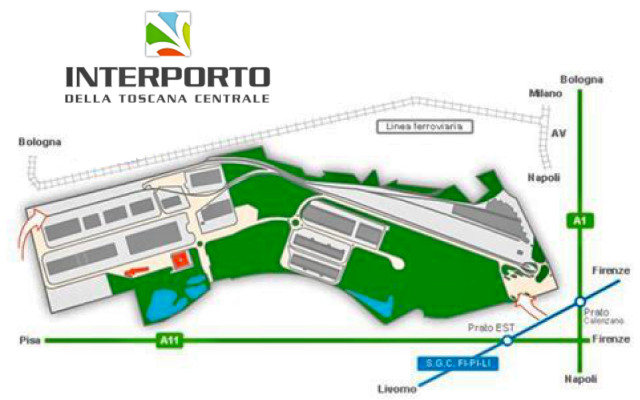Interporto della Toscana Centrale invests in AI (Artificial Intelligence) and autonomous driving in the name of sustainable mobility. The ‘City Gate’ trial, which measured the efficiency of freight movement in the textile district, is being followed by the design of new advanced mobility tools.
Central Tuscany Freight Village toward AI and autonomous driving
The new phase aims to accelerate the Gonfienti logistics hub on issues of energy transition, sustainable mobility and technological innovation. Crucial in achieving these goals is the new consulting relationship with Roberto Maldacea, a university professor and expert in first- and last-mile mobility and new technologies associated with artificial intelligence and autonomous driving.
‘We want to transfer best practices associated with the most innovative technologies available today into the Freight Village,’ Maldacea explains. ‘The fields of application are sustainable mobility and freight logistics. The idea is to have more sustainability, more security and more digital technology to serve the smart city and the entire Prato, Florence and Pistoia metropolitan area‘.
The future is today
These months of activity related to innovation within the Central Tuscany Freight Village will culminate on June 30 in an initiative during which all the studies developed will be presented and the technological potential explained. All in the presence of the partners who joined the initiative.
‘We are looking to the future but with a scope of applicationofour ideas that is intended to be immediately effective,’ stresses the president of the Prato Freight Village, Francesco Querci. ‘The new technologies adopted will be useful both to our logistics infrastructure and to all the companies within the Gonfienti hub and the district.’
Zero-impact mobility
Among the various actions put in place, efforts also continue to transform the Central Tuscany Freight Village into a first and last mile hub, using zero-impact vehicles.
The project rests its foundation on the experimentation of the ‘City Gate’ and which now wants to transform into a real service to support the district, through a digital process capable of identifying in real time every movement of the shuttles containing the goods, and verifying exactly the savings achieved in terms of costs and environmental impact.
It is ‘a project whose benefits are there for all to see. And that within the district is gaining more and more acceptance‘, Querci stressed.
In line with the European Green Deal
Prato’s logistics hub projects are perfectly consistent with the goals of the European Green Deal and the four proposals made in this regard by the European Commission, as well as the need for traceability 3.0.
Spread over an area of 700 thousand square meters, the Central Tuscany Freight Village houses 60 operators in the textile, fashion, luxury, mechanical engineering, chemical, paper, textile, food, wine and environmental protection sectors. Inside, in addition to the customs offices of three provinces (Prato, Pistoia, Florence) and warehouses, four tracks enable rail traffic capable of handling 120 thousand TEUs(twenty-foot equivalent units, the standard measure of length in container transport) annually.
Marta Strinati
Professional journalist since January 1995, he has worked for newspapers (Il Messaggero, Paese Sera, La Stampa) and periodicals (NumeroUno, Il Salvagente). She is the author of journalistic surveys on food, she has published the book "Reading labels to know what we eat".








